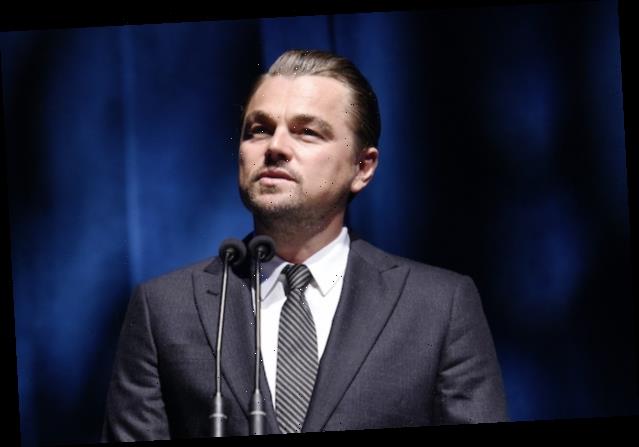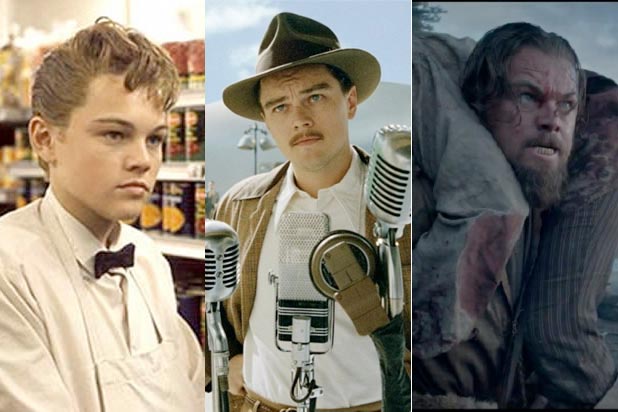Brazilian President Jair Bolsonaro accused the actor and environmental activist, without evidence, of “giving money to torch the Amazon” on Friday
For nearly 30 years, Leonardo DiCaprio has managed to maintain an image as a handsome, Hollywood heartthrob and as one of the industry’s most bankable and pedigreed performers. While he’s consistently been at the top of the A-list for most of his career, the roles DiCaprio has taken have changed dramatically. In “Once Upon a Time…in Hollywood,” DiCaprio lends his star power to help Quentin Tarantino shape a new Tinseltown legend. Here’s how the actor has evolved over the years:

“Growing Pains” (1991)
After guest-starring on “Roseanne” and “Parenthood,” DiCaprio landed a role on the long-running sitcom “Growing Pains.” He played Luke Brower, a homeless student in the class of young school teacher Mike (Kirk Cameron) that the Seaver family take in until he is reunited with his father.
ABC

“This Boy’s Life” (1993)
In his first major movie role, Leo starred alongside Robert De Niro and Ellen Barkin in the ’50s period drama “This Boy’s Life.” Here, he flashed a rebellious charisma and wildness that would come to define his future performances.
Warner Bros.
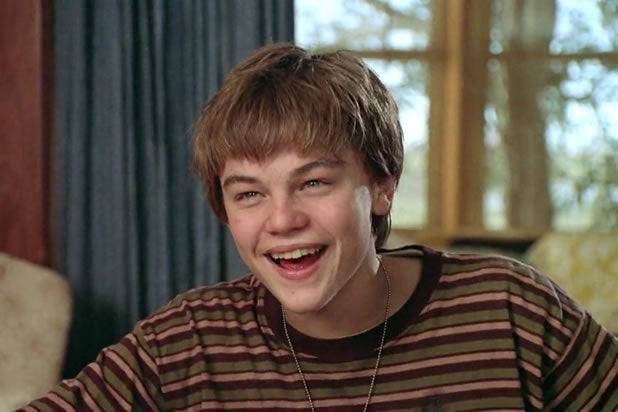
“What’s Eating Gilbert Grape” (1993)
DiCaprio earned his first Oscar nomination at 19 in “What’s Eating Gilbert Grape.” He starred as the mentally challenged younger brother to Johnny Depp in Lasse Hallstrom’s tender family drama set in small-town Middle America.
Paramount Pictures
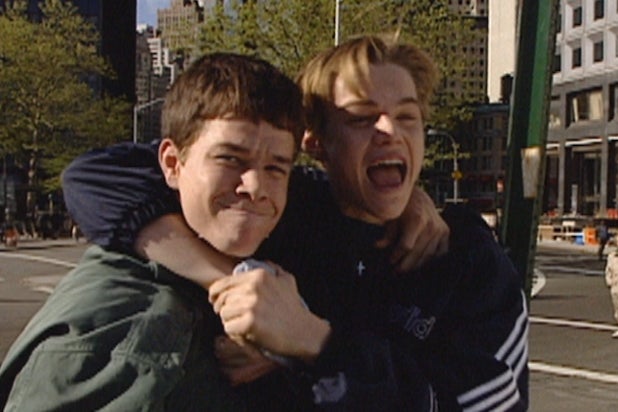
“The Basketball Diaries” (1995)
DiCaprio took a starring role in “The Basketball Diaries,” playing a teenage basketball star who falls into drug addiction. The movie became the focal point for critics in the wake of the Columbine high school shooting based on a disturbing dream sequence in which DiCaprio’s character shoots six of his classmates with a shotgun while wearing a black trench coat.
New Line Cinema

“Romeo + Juliet” (1996)
In Baz Luhrmann’s modern rendition of the classic Shakespeare play “Romeo + Juliet,” DiCaprio transitioned to full-on Hollywood heartthrob opposite Claire Danes.
Twentieth Century Fox
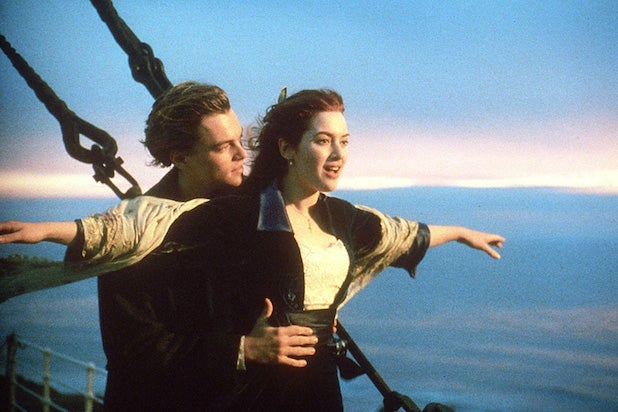
“Titanic” (1997)
DiCaprio becomes a household name came when he starred in “Titanic” as the charming, but poor, artist Jack Dawson. The movie went on to win 11 Oscars and become then the highest-grossing movie of all time, but DiCaprio did not win for Best Actor.
Twentieth Century Fox/Paramount Pictures

“The Man in the Iron Mask” (1998)
DiCaprio rocked longer tresses to embody King Louis XIV in “The Man in the Iron Mask.”
United Artists

“The Beach” (2000)
Leo chopped his golden locks very short for his role in Danny Boyle’s “The Beach,” in which his character travels to a secret island in Thailand with a map and the hope to find a solitary beach paradise.
Twentieth Century Fox
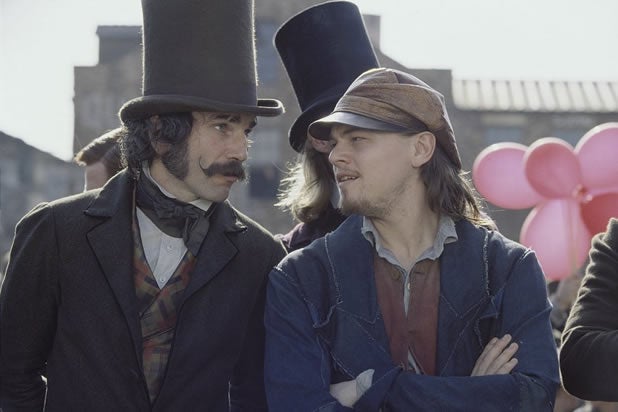
“Gangs of New York” (2002)
“Gangs of New York” was the first of Leo’s many collaborations with director Martin Scorsese, leading a brutal gang drama set during Civil War-era New York.
Miramax
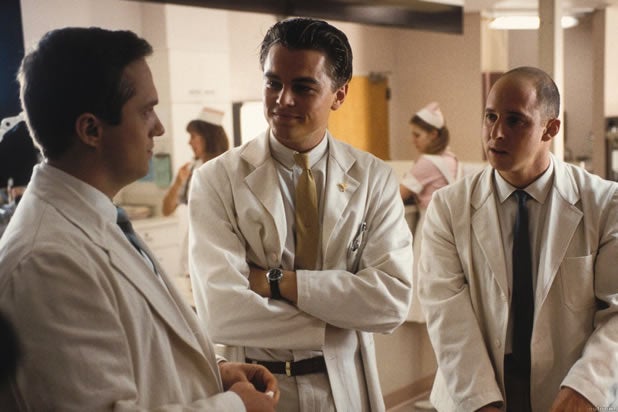
“Catch Me If You Can” (2002)
DiCaprio’s massive 2002 found him working with another legendary director and flashing his charm as Frank Abagnale Jr. in Steven Spielberg’s slick biopic “Catch Me If You Can.” DiCaprio plays a real-life con man who impersonated a pilot, doctor and legal prosecutor who swindled millions and became one of the FBI’s Most Wanted.
DreamWorks
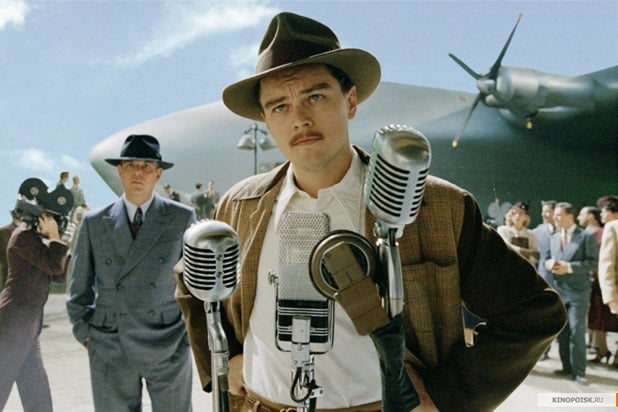
“The Aviator” (2004)
In his second Oscar-nominated performance, DiCaprio portrayed the early life of legendary tycoon, playboy and eccentric Howard Hughes in Martin Scorsese’s period epic “The Aviator.”
Miramax

“The Departed” (2006)
In another Scorsese collaboration, DiCaprio and Matt Damon star alongside Jack Nicholson in Scorsese’s tense gangster story full of double-crossing and thick Boston accents.
Warner Bros.
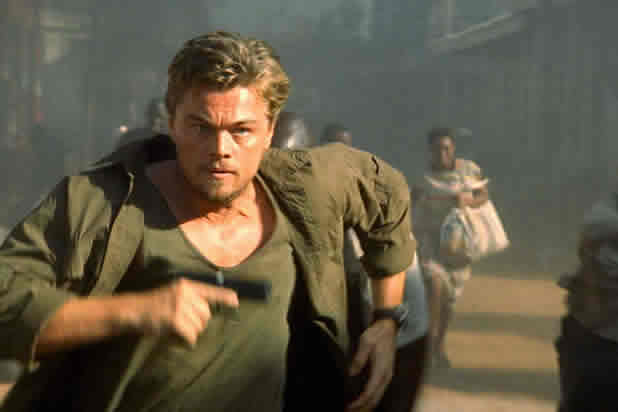
“Blood Diamond” (2006)
This would be another major year for DiCaprio, as he earned his third Oscar nomination for donning a thick South African accent in “Blood Diamond,” playing a diamond smuggler in Edward Zwick’s action-thriller. While it was a strong anti-hero performance, DiCaprio’s third straight Oscar loss suggested he might’ve fared better with a nomination for Scorsese’s Best Picture winner “The Departed.”
Warner Bros.

“Revolutionary Road” (2008)
DiCaprio and his “Titanic” co-star Kate Winslet were reunited in “Revolutionary Road,” Sam Mendes’s suburban drama about a 1950s couple struggling with their mundane lifestyle. Though he won the Golden Globe for Best Actor in a Drama, the Academy snubbed him for a nomination.
DreamWorks

“Shutter Island” (2010)
This would be another big year for DiCaprio in which his characters grew more tormented as they grappled with reality. In Scorsese’s “Shutter Island,” he plays a U.S. Marshall investigating a psychiatric facility, only to doubt his own sanity.
Paramount Pictures
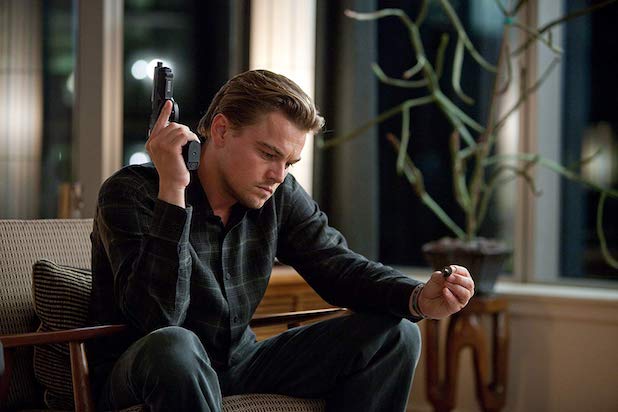
“Inception” (2010)
Also in 2010, DiCaprio had the biggest box office opening of his career when he starred in Christopher Nolan’s mind-bending thriller “Inception.” DiCaprio was a natural as a master thief who used dreams as a way to stage the ultimate heist, all as he battles his own mental demons.
Warner Bros.
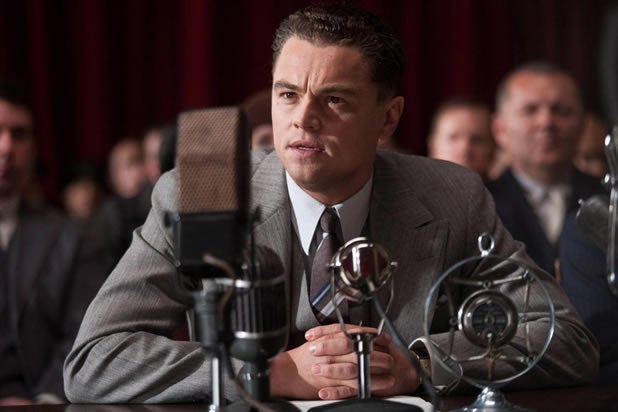
“J. Edgar” (2011)
DiCaprio teamed with another legendary director in Clint Eastwood for a biopic on the life of FBI Director J. Edgar Hoover. DiCaprio donned another accent and heavy makeup to portray Hoover across 50 years of his life.
Warner Bros.

“Django Unchained” (2012)
DiCaprio hadn’t played a villain prior to Quentin Tarantino casting him as a despicable, racist slave owner in “Django Unchained.” DiCaprio went to great lengths to embody the brutal, fiery personality of his character. DiCaprio told THR that he stayed in character and kept filming after getting a bloody cut on his hand, a take that ended up making the final cut of the film.
Columbia Pictures

“The Great Gatsby” (2013)
DiCaprio shifted back into handsome charmer with a dark side mode for Baz Luhrmann’s colorful take on F. Scott’s Fitzgerald’s American classic “The Great Gatsby,” giving the world a gif for the ages in the process.
Warner Bros.
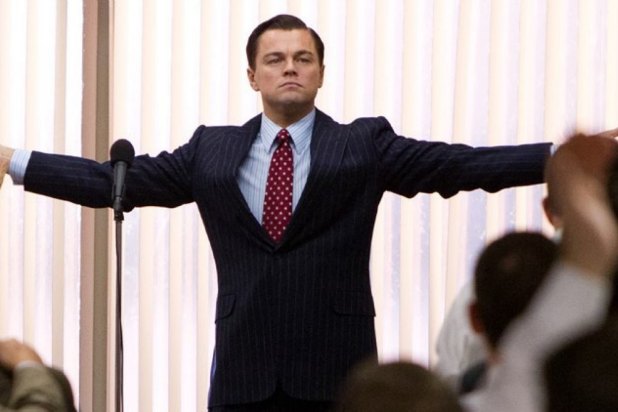
“The Wolf of Wall Street” (2013)
In his fifth movie with Martin Scorsese, “The Wolf of Wall Street,” DiCaprio portrayed the outlandish rise and fall of infamous stockbroker Jordan Belfort. The performance is among the most energetic and over the top of his career, and he earned two Oscar nominations for his work, one for Best Actor and another for producing.
Paramount Pictures

“Virunga” (2014)
DiCaprio has had a long career as a producer, but he made a name for himself as a leading advocate for climate change and wildlife preservation beginning with the Oscar-nominated documentary he executive produced, “Virunga.” The film was acquired by Netflix and follows a group of individuals who fight dangerous conditions to protect some of the world’s last remaining mountain gorillas. DiCaprio would follow up that effort with other critically acclaimed docs such as “Sea of Shadows,” “Before the Flood” and “Ice on Fire.”
Netflix
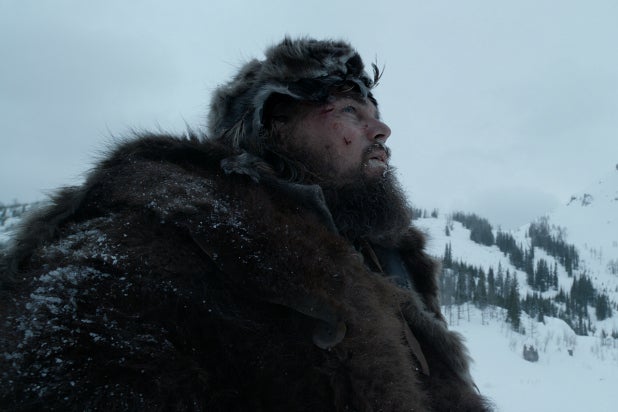
“The Revenant” (2015)
DiCaprio gave all of himself in a punishing, excruciating shoot for Alejandro Inarritu’s “The Revenant,” trudging through nature and even shielding himself in a horse’s carcass for warmth to portray the 19th-century frontiersman named Hugh Glass. The performance paid off, as DiCaprio finally won his Oscar.
Twentieth Century Fox
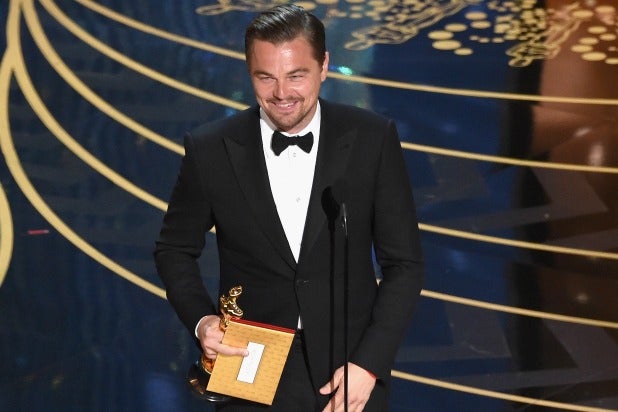
Academy Awards (2016)
Upon winning the Oscar for Best Actor, DiCaprio also used his acceptance speech to advocate for action on climate change. “It is the most urgent threat facing our entire species, and we need to work collectively together and stop procrastinating,” he said.
Getty Images
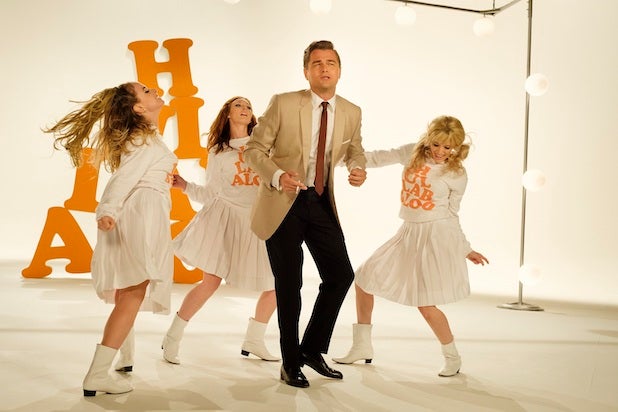
“Once Upon a Time…in Hollywood” (2019)
DiCaprio returned to the screen for the first time in four years since winning his Oscar to again team up with Quentin Tarantino. In “Once Upon a Time…in Hollywood,” DiCaprio stars alongside Brad Pitt and his “Wolf of Wall Street” co-star Margot Robbie as a washed up movie star trying to make it back on top during a massive period of change in 1969 Hollywood around the time of the Manson Family murders.
Sony Pictures
The actor has transitioned from a moppet on the sitcom in the early ’90s to Academy Award-nominated big-screen performances
For nearly 30 years, Leonardo DiCaprio has managed to maintain an image as a handsome, Hollywood heartthrob and as one of the industry’s most bankable and pedigreed performers. While he’s consistently been at the top of the A-list for most of his career, the roles DiCaprio has taken have changed dramatically. In “Once Upon a Time…in Hollywood,” DiCaprio lends his star power to help Quentin Tarantino shape a new Tinseltown legend. Here’s how the actor has evolved over the years:
Source: Read Full Article
